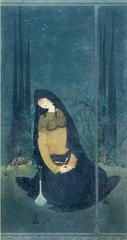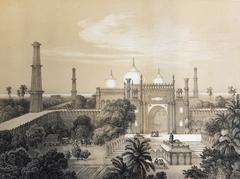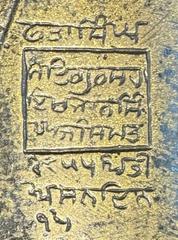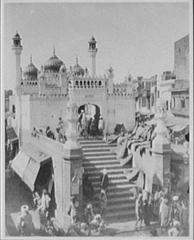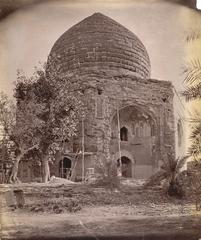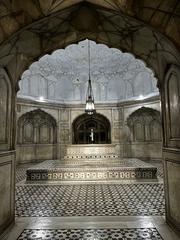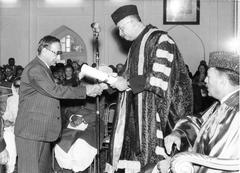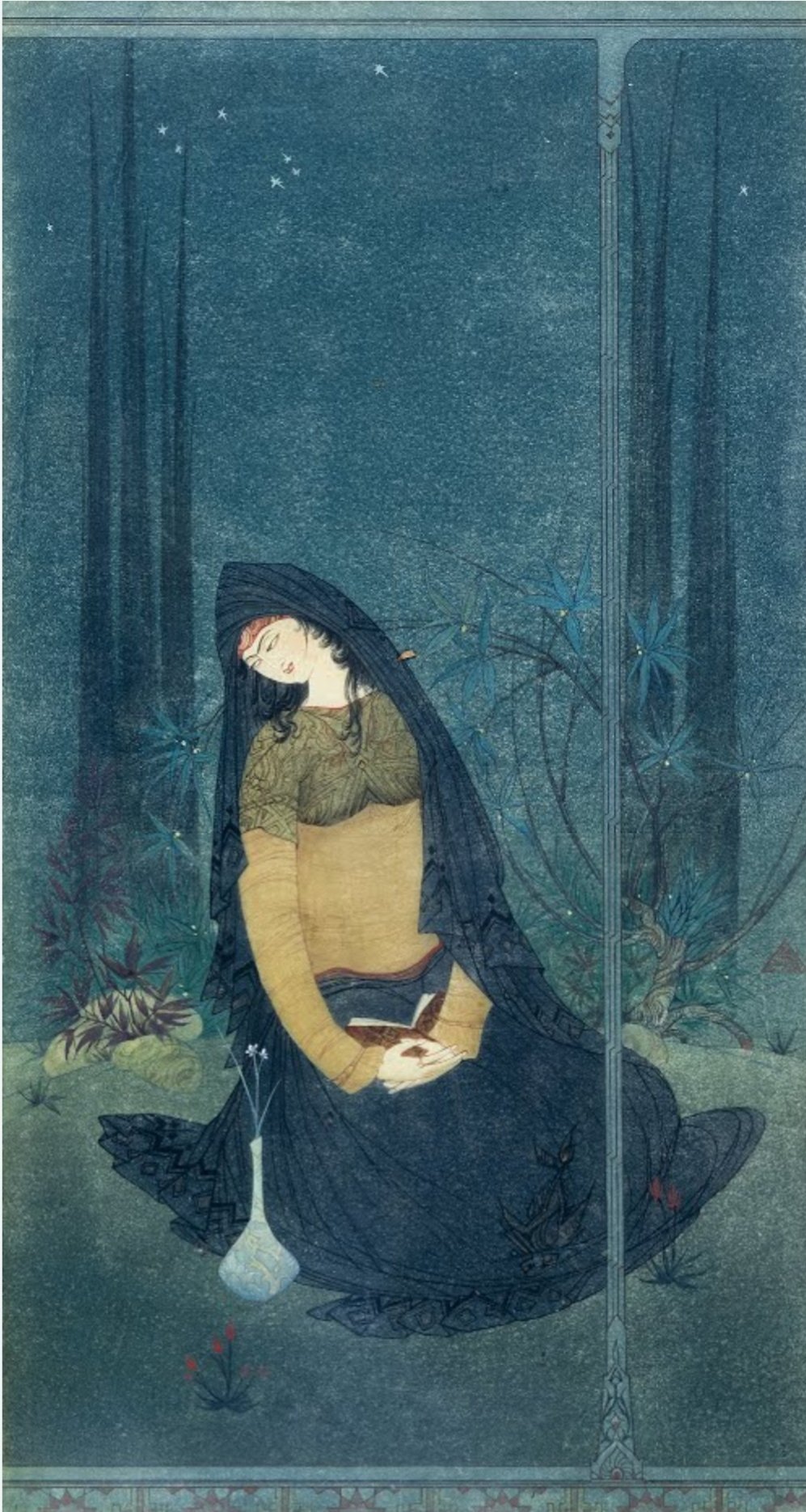
Visiting Lahore Museum: Hours, Tickets, and Tips
Date: 18/07/2024
Introduction
The Lahore Museum, located in the vibrant city of Lahore, Pakistan, is one of the country’s most significant cultural institutions. Established in 1865, the museum offers an in-depth journey through the rich history and diverse cultures of the Punjab region. Initially housed in the Wazir Khan Baradari and later moved to a building designed by the distinguished British architect Sir Ganga Ram in 1894, the museum itself is an architectural masterpiece featuring Indo-Saracenic elements (Lahore Museum Official Website).
The museum’s collection has grown enormously over the years, encompassing artifacts from the Indus Valley Civilization, Gandhara sculptures, Islamic art, and colonial-era relics. One of its most prized possessions is the Fasting Buddha, a stunning example of Gandhara art from the 2nd century CE. Besides its extensive collection, the Lahore Museum has played a crucial role in education and research, making it a valuable resource for scholars and students alike (Dawn News).
With a commitment to preservation and modernization, the museum has embraced digital initiatives to make its resources accessible to a global audience. Through guided tours, educational programs, and special exhibitions, the Lahore Museum continues to be a cultural hub that fosters a deeper appreciation of the region’s heritage (Britannica).
Table of Contents
- Introduction
- History of Lahore Museum
- Expansion and Collection Growth
- Role in Education and Research
- Preservation and Conservation Efforts
- Modernization and Digitalization
- Cultural and Social Impact
- Visiting Hours, Tickets, and Travel Tips
- Notable Exhibits and Artifacts
- Special Events and Programs
- Nearby Attractions
- FAQ
- Visit and Stay Up to Date
History of Lahore Museum
Establishment and Early Years
The Lahore Museum was established in 1865 during the British colonial period, initially housed in the Wazir Khan Baradari. The museum’s foundation was part of a broader effort by the British to document and preserve the cultural heritage of the Indian subcontinent. The museum’s collection began with artifacts and artworks from the Punjab region, reflecting the rich history and diverse cultures of the area.
Architectural Significance
In 1894, the museum was relocated to its current building, designed by the renowned British architect Sir Ganga Ram. The structure is an excellent example of Indo-Saracenic architecture, a style that combines elements of Indian and Islamic architecture with Gothic revival and neoclassical styles. The building’s red-brick facade, intricate carvings, and domes are a testament to the architectural ingenuity of the period.
Expansion and Collection Growth
Over the years, the Lahore Museum’s collection has grown significantly, encompassing a wide range of artifacts from different periods and regions. The museum’s collection includes items from the Indus Valley Civilization, Gandhara sculptures, Islamic artifacts, and colonial-era relics. One of the most notable pieces in the collection is the Fasting Buddha, a masterpiece of Gandhara art that dates back to the 2nd century CE. The museum also houses an extensive collection of miniature paintings, manuscripts, and coins.
Role in Education and Research
The Lahore Museum has played a crucial role in education and research since its inception. It serves as a valuable resource for scholars, historians, and students, offering insights into the region’s rich cultural heritage. The museum’s library contains a vast collection of books, journals, and manuscripts. The museum also organizes exhibitions, lectures, and workshops to promote cultural awareness and education among the general public.
Preservation and Conservation Efforts
Preservation and conservation have been central to the museum’s mission. The Lahore Museum has implemented various measures to ensure the long-term preservation of its collection. This includes climate-controlled storage, regular maintenance, and restoration of artifacts. The museum has also collaborated with international organizations and experts to adopt best practices in conservation.
Modernization and Digitalization
In recent years, the Lahore Museum has embraced modernization and digitalization to enhance its accessibility and reach. The museum has developed a digital archive, allowing visitors to explore its collection online. This initiative aims to make the museum’s resources available to a global audience. The museum has also introduced interactive displays and multimedia presentations to provide a more engaging and informative experience for visitors.
Cultural and Social Impact
The Lahore Museum has had a profound cultural and social impact on the community. It serves as a cultural hub, hosting various events, exhibitions, and cultural programs. The museum’s efforts to promote cultural awareness and education have contributed to a greater appreciation of the region’s heritage. The museum also plays a vital role in fostering a sense of identity and pride among the local population.
Visiting Hours, Tickets, and Travel Tips
For visitors planning to explore the Lahore Museum, here is some essential information:
- Visiting Hours: The museum is open from Tuesday to Sunday, typically from 9:00 AM to 5:00 PM, with Monday being a closed day. It is advisable to check the museum’s official website for the latest information on opening hours.
- Tickets: Ticket prices are generally affordable, with discounts available for students and senior citizens. Detailed ticket information can be found on the Lahore Museum’s official website.
- Guided Tours: The museum offers guided tours that provide in-depth information about the exhibits and artifacts. These tours are highly recommended for a comprehensive understanding of the museum’s collection.
- Photography: Photography is allowed in certain sections of the museum, but it is essential to follow the museum’s guidelines and respect any restrictions.
- Accessibility: The museum is wheelchair accessible, and facilities are available for visitors with disabilities. It is advisable to contact the museum in advance for any specific accessibility requirements.
- Souvenir Shop: The museum has a souvenir shop where visitors can purchase books, replicas, and other items related to the museum’s collection.
Notable Exhibits and Artifacts
The Lahore Museum’s collection includes several notable exhibits and artifacts of great historical and cultural significance. Some of the most prominent items include:
- The Fasting Buddha: A remarkable Gandhara sculpture that depicts the Buddha in a state of extreme asceticism. This piece is considered one of the finest examples of Gandhara art and attracts scholars and visitors from around the world.
- Indus Valley Artifacts: The museum houses a collection of artifacts from the Indus Valley Civilization, including pottery, tools, and jewelry. These items provide valuable insights into one of the world’s earliest urban civilizations.
- Islamic Art and Manuscripts: The museum’s collection of Islamic art includes calligraphy, manuscripts, and decorative arts from various periods. These items reflect the rich artistic traditions of the Islamic world.
- Colonial-Era Relics: The museum also features artifacts from the British colonial period, including paintings, photographs, and documents. These items offer a glimpse into the colonial history of the region.
Special Events and Programs
The Lahore Museum regularly hosts special events, exhibitions, and cultural programs that provide additional opportunities for learning and engagement. These events often focus on specific themes or historical periods and are designed to appeal to a wide range of audiences. Details about upcoming events can be found on the museum’s official website.
Nearby Attractions
For those interested in exploring more of Lahore’s historical sites, several attractions are located near the Lahore Museum:
- Badshahi Mosque: One of the largest mosques in the world, known for its stunning Mughal architecture.
- Lahore Fort: A UNESCO World Heritage site with a rich history and impressive structures.
- Shalimar Gardens: Historic gardens built during the Mughal era, known for their beautiful landscaping and water features.
FAQ
Q: What are the Lahore Museum’s visiting hours? A: The museum is open from Tuesday to Sunday, typically from 9:00 AM to 5:00 PM. It is closed on Mondays.
Q: What is the ticket price for entry to the Lahore Museum? A: Ticket prices are generally affordable, with discounts available for students and senior citizens. Detailed ticket information is available on the museum’s official website.
Q: Are guided tours available at the Lahore Museum? A: Yes, the museum offers guided tours that provide in-depth information about the exhibits and artifacts.
Q: Can I take photographs inside the Lahore Museum? A: Photography is allowed in certain sections of the museum, but visitors must follow the museum’s guidelines and respect any restrictions.
Q: Is the Lahore Museum accessible for visitors with disabilities? A: Yes, the museum is wheelchair accessible and has facilities for visitors with disabilities. It is advisable to contact the museum in advance for specific accessibility requirements.
Visit and Stay Up to Date
For more information, you can visit the Lahore Museum’s official website. Stay up to date with the latest events and exhibitions by following the museum on social media. Plan your visit today and explore the rich cultural heritage of Lahore at the Lahore Museum.
By understanding the history and significance of the Lahore Museum, visitors can gain a deeper appreciation of the cultural heritage of Lahore and the broader region.
Conclusion
Visiting the Lahore Museum offers a unique opportunity to explore Pakistan’s rich cultural tapestry. From its historical roots to its modern-day initiatives, the museum provides a comprehensive overview of the region’s history and artistic achievements. Its diverse collections, ranging from ancient Indus Valley artifacts to exquisite Islamic art and colonial-era relics, ensure a captivating experience for all visitors.
The museum’s efforts in preservation and education, coupled with its modernization and digitalization initiatives, make it a vital cultural institution. Whether you are a history enthusiast, an academic, or simply a curious traveler, the Lahore Museum promises an enriching and memorable visit. For updated information on visiting hours, ticket prices, and special events, be sure to check the Lahore Museum’s official website and follow them on social media for the latest updates (History).
